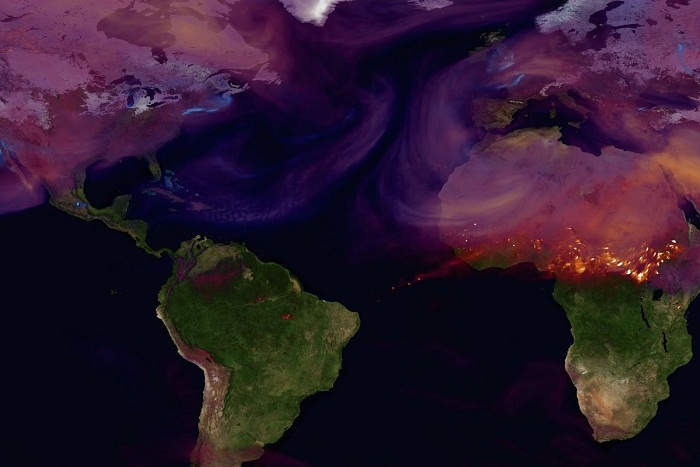Those numbers would be way worse, however, if it weren`t for the various terrestrial plants that take in carbon dioxide during photosynthesis. Forests are found to be major carbon sinks, for example, taking in carbon from the air and storing it in their trunks and roots for years. Oceans are also responsible for absorbing the carbon we emit; the salty waters take in carbon dioxide, while marine plants and animals — like phytoplankton — also take in CO2 through photosynthesis. NASA estimates that nearly half of the carbon emitted by humans is absorbed through these natural land and marine processes. "The land and the ocean are really doing us a big favor," said Lesley Ott, an atmospheric scientist at NASA`s Goddard Space Flight Center.
But NASA is worried that may change. As the carbon in the atmosphere warms up the climate, the heat may alter how marine and land ecosystems absorb carbon. They could take in more of the gas over time, or they could become less efficient at the process, allowing more carbon to remain in the atmosphere. Researchers simply don`t know.
To better understand how these natural carbon absorption processes work, NASA plans to use data gathered from upcoming NASA satellite missions and multi-year field campaigns to create models of how these ecosystems work. NASA has already gathered data for this purpose using its Orbiting Carbon Observatory-2, a satellite launched last year to measure carbon dioxide from the top of the atmosphere down to the planet`s surface. OCO-2 has revealed the areas emitting the most carbon dioxide and the regions in which the gas is being absorbed heavily.
Other missions will involve flying over coral reefs and phytoplankton blooms to see how they`ve been influenced by climate and changing ocean chemistry. The space agency also noted that new instruments will be added to the International Space Station to better observe plants and forests. Together, all of these instruments, satellite data, and field research will be used to create scientific models that can better predict how carbon-absorbing ecosystems will react to the changing climate. That way, we`ll know if our natural carbon storage systems will continue to work to our advantage.
More about:
















































